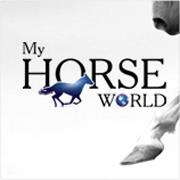Horsemanship Training Basic Horsemanship

Horsemanship is a simple yet highly misunderstood approach to horse training. It is a term often used in conjunction with “natural” and is frequently associated with “horse whispering.” But there is nothing magical about horsemanship. It requires focus, patience, dedication, and hard work. At Lyons Legacy School of Horsemanship, they don’t use the phrase “natural horsemanship” simply because there’s nothing natural about domesticating a wild animal and asking him to stop doing what’s natural for him. If you want your horse to act naturally, turn him loose in a big field with other horses and leave him alone.
There is never any excuse or reason to mistreat a horse because he doesn’t feel like doing what you ask him to do. If you mistreat your horse, count on him returning the favor some day. The LL School of Horsemanship emphasizes a “trust, not trauma” approach to horsemanship. In teaching Basic Horsemanship, the school focuses on four key components.
1. Getting to Know Your Horse – The first rule in horsemanship is “keep you and your horse safe”. To do this, it is essential to know how your horse perceives his environment; that is, understanding his senses of smell, touch, hearing, sight, and taste. Additionally, you should have a basic understanding of horse anatomy, vocalizations, breeds and types, colors and markings.
2. Caring for Your Horse – Horses need daily care. Before you ride or work with your horse, always give him a thorough grooming. Check his body for sores, cuts, lesions, swellings, and inspect and clean the hoofs. Ample clean water should be constantly available. Knowing your horse’s body weight and condition is important for maintaining proper nutrition and health.
3. Understanding and Choosing Tack and Gear – Horse tack comes in many forms and types, and will vary by riding discipline. Ensure that all tack is clean and properly fits your horse. Learn how your bit works on your horse, and how to bridle your horse without causing him pain or bit problems.
4. How Your Horse Learns – Horses are herd animals. Their response to situations where they become afraid, is to flee. A horseman strives to teach their horse not to flee in situations where their fear is unfounded. This requires the horseman to have control over who is making the decisions. You teach your horse to respond to cues through conditioned responses using positive and negative reinforcement. This does not mean you should ever intentionally cause your horse pain. Horses do not need to experience pain to learn.
Company – LL Inc and the Lyons Legacy School of Horsemanship offer a wide variety of equine educational materials, including a series of horse training and riding courses, manuals, and videos for online and on-the-ground learning.
Contact – Ian Kirkham, LL Inc., ian.kirkham@gmail.com. A biologist with a PhD in animal behaviour, and a writer for much of his career, Ian now focuses on one of his lifelong passions – horses. He’s owned and trained horses in Canada, US, Zimbabwe and Costa Rica. Ian divides his time between training horses and creating educational products for horse lovers.
